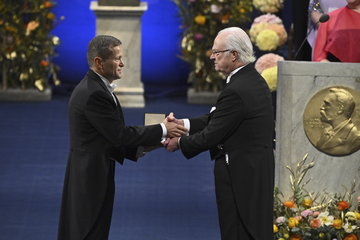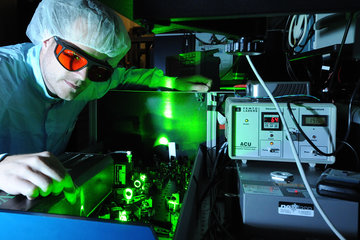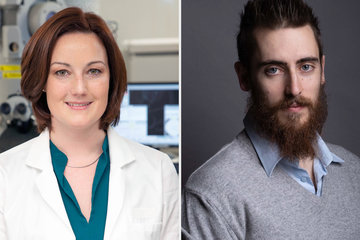Peter Seeberger, trailblazer in the glycosciences, wins 2017 Stifterverband Science Prize
Automated sugar synthesis is basis for novel vaccines, diagnostics and therapies
Sugar offers sweet prospects for the future − even in unexpected areas, such as medicine. Synthetic sugars are components of novel vaccines against infectious diseases such as multiresistant hospital microbes. A method for synthesizing sugars quickly and reliably was the brainchild of Peter H. Seeberger, Director at the Max Planck Institute of Colloids and Interfaces in Potsdam. Seeberger is a pioneer in the glycosciences, a research field investigating the role of sugar molecules. Together with the Max Planck Society, the Stifterverband has now awarded Seeberger its 2017 Science Prize. The award, endowed with 50,000 Euros, will be presented at the Annual Meeting of the Max Planck Society in Jena on June 21, 2017. Seeberger is being honoured for his ceaseless commitment to the translation of outstanding basic research into products through several companies which he co-founded: GlycoUniverse distributes machines and synthetic sugars developed by Seeberger, while Vaxxilon develops vaccines against hospital acquired infections. Peter Seeberger is interested in complex sugar molecules, known as glycans, that are located on the surfaces of all body cells. These sugars are of vital importance for life processes in organisms − both good and bad organisms, as pathogenic bacteria, for example, use them to dock to body cells. For a long time, scientists lacked a fundamental understanding of the structure and function of glycans.

Seeberger developed a new chemical technique that enabled rapid and reliable access to pure glycans. Having begun in 2001 to modify other instruments specifically for this purpose, in 2008 Seeberger and his colleagues constructed the first prototype of an automated carbohydrate synthesis machine, now exhibited in the Deutsches Technikmuseum in Berlin. Since 2014, the Berlin-based company GlycoUniverse, co-founded by Seeberger, has been marketing a commercial version of the synthesizer (GlyconeerTM), which is in demand in Europe, Asia and North America.
The automated synthesis process has helped researchers to quickly produce sugars that are applied to surfaces for diagnostic purposes, for example to test blood for antibodies. These “sugar chips” can identify glycans on bacterial surfaces. Such glycans can then be used as vaccines to protect animals from certain death due to hospital microbes such as C. difficile and Klebsiella species as well as tropical diseases. Vaccine candidates identified at the Max Planck Institute are now being developed by Vaxxilon AG, a start-up company founded in 2015 that already has 15 employees in Reinach (Switzerland) and a separate research facility in Berlin. The Paul Ehrlich Institute has given the green light for the first clinical trial of a candidate vaccine against streptococcal infections. “The new class of vaccines can be produced more quickly and cost-effectively. They also have additional benefits in terms of distribution and administration that can improve global access to vaccines,” Seeberger explains.
Basic research for protection against malaria
Seeberger is also active in other fields. For example, his research team has discovered how to produce the most effective agent against malaria – artemisinin – much more cost-effectively and on a large scale. ArtemiFlow was founded to implement the refinement of this process, which was first presented in 2012. Through this start-up, Seeberger is driving forward the development and application of a reactor for the novel production of artemisinin. As a passionate basic researcher, Seeberger is also active in other areas at the interface to the practical application of his findings. He holds more than 40 patent families and has co-founded a total of eight companies.
Peter Seeberger, born in 1966, studied chemistry at the University of Erlangen-Nuremberg, Germany. In 1995, he received a Fulbright scholarship in biochemistry from the University of Colorado at Boulder. After working as a postdoctoral fellow at the Sloan Kettering Institute for Cancer Research in New York, he became assistant professor at the Massachusetts Institute of Technology (MIT) in 1998 and was appointed tenured associate professor in 2002.
From 2003-2008, he was a professor of organic chemistry at the ETH Zurich and professor at Sanford Burnham Institute in La Jolla, California. Since 2009, he has been head of the Biomolecular Systems Department at the Max Planck Institute of Colloids and Interfaces in Potsdam.
KS/JE












